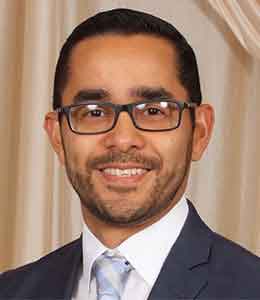For more than 20 years, the Imperial County Office of Education (ICOE) has worked with local organizations and agencies to build a state-of-the-industry fiber optic communications network in its K–12 schools. In 2018, ICOE launched BorderLink, a collaborative effort to narrow the “homework gap” by expanding affordable access to reliable Internet connection at home. We talked with ICOE’s chief technology officer, Luis Wong, about how Imperial County—a largely rural area with the lowest per capita income in California—is bridging the digital divide.

Tell us a bit about Imperial County’s broadband efforts—who is served and what are the keys to success?
We’ve been focused on building broadband networks to serve our community anchor institutions—that includes schools, libraries, hospitals, first responders, city and the County of Imperial. The network today serves mostly students—although we see this as a primarily as a community asset, a community benefit.
The governance structure is the foundation for organizing the work that we do. We all participate in what we call the Imperial Valley Telecommunications Authority (IVTA), a joint powers authority (JPA) that focuses on broadband infrastructure for public agencies in Imperial County. This approach allows us to spread the risk across many organizations in terms of the funding and the sustainability of broadband.
IVTA is comprised of 31 member agencies, each with a seat on the board. Membership includes the 16 school districts, the community college, San Diego State University, the county, and most of the cities. ICOE is the network administrator, responsible for day-to-day operations of the JPA. It’s not predicated just on one individual who might leave the organization and then everything crumbles. Our ongoing relationships and regular communication help remove barriers—for example, right-of-way or infrastructure issues. We also leverage our resources to keep costs down.
Back in 2017, we started having conversations about a wireless broadband network, which for us felt like a natural extension of our physical infrastructure. After we started a pilot network, we got hit with the pandemic. Our focus shifted toward making sure we could help students and families access affordable broadband at home. Affordability is a big issue in Imperial County—more than 20% of our residents live in poverty, and about three-quarters of our students qualify for free and reduced-price meals.
How did the pandemic affect your work?
We were relatively well positioned when the stay-at-home order hit in March 2020. But because BorderLink was still in pilot mode, our network wasn’t really designed to have so many students connected at the same time. I think all local broadband providers ran into that situation. It’s like the freeway system: nobody designs it assuming that everyone is there at the same time. But we were able to immediately provide some options for our school districts, including hotspots, indoor routers, and—for homes that were more remote—external antennas.
When we were in pilot mode, we were begging our districts to start testing devices and get acclimated to using them. And then in March 2020, everybody was trying to gather as many devices as they could—not just broadband devices but laptops, Chromebooks, and that sort of thing.
We saw a lot of folks during the pandemic who did not have broadband at home. We also saw a need for more capacity—families with two or three students who required broadband while their parents were doing remote work didn’t have adequate home service. Our BorderLink connection combined with home broadband to alleviate network congestion.
We basically ran into a couple of challenges. One was the supply chain—difficulty getting access to contractors, the deployment of 5G networks. The other piece we never envisioned was the federal government banning brands of equipment that weren’t secure. We really had to take a step back and revisit our whole infrastructure. But we took the opportunity to look for the best equipment out there at a reasonable price.
What opportunities have recent infusions of state and federal funding created?
It’s made a huge difference. It changed the conversation—from “we think this is a good thing” to “this is a necessity.” We were very well positioned in the sense of having a shovel-ready project ready to go that made allowable use of the funding. The one-time dollars helped us with replacing the equipment that wasn’t secure and with expanding capacity. We were able to increase speed to our user base and increase coverage—expand the number of antennas.
We also have an opportunity to start saving money for the future. Certainly, with wireless technologies we’ve learned that the equipment is more costly—not only the equipment but the ongoing specialized labor required to upgrade antenna systems. The IVTA Board is having conversations about how to best sustain this infrastructure as we move forward.






